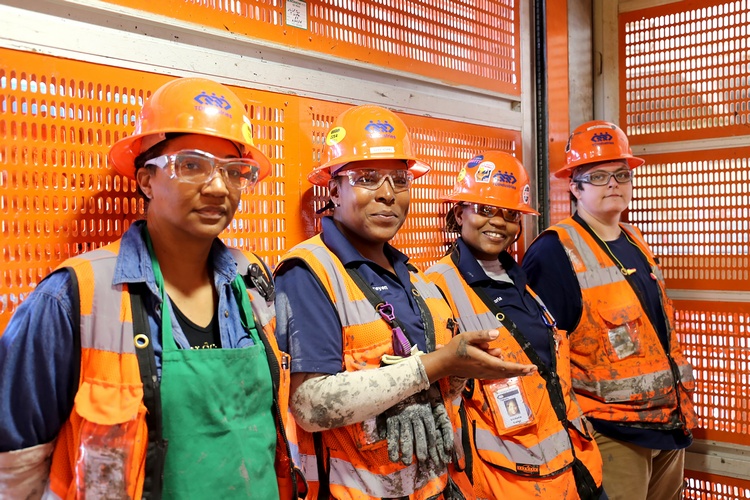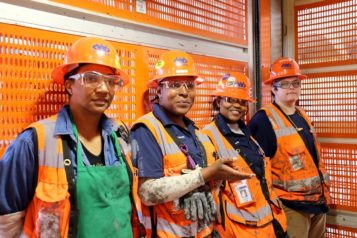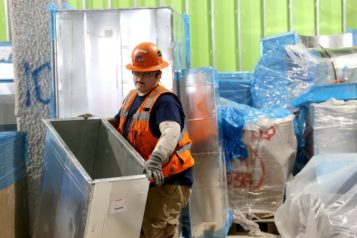
By Andy Williams
Thirty-one million U.S. skilled-trades positions will be unfilled by 2020. In the manufacturing industry, 32 percent of $1 billion-plus companies estimate they will lose more than $100 million each year as baby boomers retire during the next five years. And it’s not much rosier in construction. Executives are seeing cracks extruding from the gap, expanding closer and closer to their company’s profitable foundation, and many leaders are branching out to solve this crisis in new and innovative ways.
Here are three tips we’ve employed to bridge the gap:
1) Look to new labor markets
As the construction workforce shifts toward the rising generations, safety, flexibility and crippling student loan debt are all important to both millennials and Generation Z. We began tailoring recruiting messages to address these topics. While that has yielded some positive results, we’ve appended that approach by reaching out to often-overlooked labor pools for construction: women, high school students and veterans. Each brings their own unique strengths to the skilled trades.
Today, women make up only 9 percent of the entire construction industry—and almost 8 percent of them work in office support roles. But, according to the Peterson Institute, companies in the top 25 percent in gender diversity were 46 percent more likely to outperform their industry average.
“Every year, we have trouble finding manpower. So one day, while brainstorming, I just said, ‘we’re going to continue to have trouble if we only look at 50 percent of the population,’” said Randee Herrin, senior vice president of TDIndustries’ Houston, Texas construction.
Her solution? Find more women for their jobsites. However, women in the field do have different challenges than those of their male colleagues, so Herrin reached out to the experts at United Way. The nonprofit’s THRIVE program specializes in career development for women. Childcare, financial education and flexibility are often overlooked necessities for women trying to start a new career, so finding a program like THRIVE to help provide resources can be crucial to ensuring the success of recruiting women in the trades.
In addition, we’ve worked to develop an onboarding and support team for its women in the trades. A critical task is for companies to recognize the importance of group training, even if you do not have the resources such as a THRIVE organization. Simply crafting an onboarding program designed for women is possible—and it doesn’t have to be a big group. For example, we recently completed such a program for six women in our Arizona office. Classroom and onsite training with foremen helped those women feel connected to each other and the jobsite, which will lead to better relationships and retention down the line. The program’s blueprint has been copied for other onboarding processes around the company.
“We matched them with the right people in the field,” said Jennifer Ferguson, TD’s Arizona professional services manager. “They learned how to do their work and why we do it a certain way.”
Field internships are also highly undervalued in the industry. For many millennials, college may not be a reasonable choice. Our purpose for field internships is to widen the interns’ understanding of other career options that are highly profitable and can be both personally and financially fulfilling. We also provide experience for college interns in most positions: in-house engineering, project management, skilled trades and manufacturing.
Veterans, too, bring a plethora of experience to the table. This labor pool’s accountability, ability to problem solve, as well as its internalized value of hard work and quality, make them ideal to keep jobsites in line.
Expanding hiring initiatives takes time, which is why it requires agreement from all business units to succeed. Consider making a company-wide goal to increase hiring of women, veterans and interns by 10, 20 or even 30 percent.
2) Using technology to leverage experience, target tech-savvy recruits
As the average age of the skilled labor market rises, many veteran technicians aren’t able to recover as quickly to the demands of the jobsite. Fortunately, millennials’ youth, willingness to work and familiarity with technology provide a possible answer. Millennials and Gen-Z workers grew up with efficiency and support—if an application or software program doesn’t work well and there’s no customer service line to answer their complaint, there are 10-20 more apps just a flick of their thumb away. They largely bring this expectation to the workforce.
For example, our team is using two-way communication tools that offer the customer, and the experienced technicians, visual documentation of necessary repairs. These experts in their field can work in a control-room setting reading charts and graphs on their building analytics tools. The resultant data, combined with extensive field experience, can provide immediate solutions back to onsite technicians to greatly increase efficiencies and lower cost for the client. These tools provide transparency to the customer and quick feedback from experienced support teams, while also providing a more natural, digital and faster way of returning a building to peak efficiency.
There are other tools that companies can utilize to work more efficiently and safely—a particularly critical requirement for younger generations. For instance, we are actively testing exoskeleton tools, which can reduce strain on team members during construction or manufacturing, and virtual reality programs to increase collaboration and reduce onsite rework. Other products in test phases include climate-controlled clothing, new helmet designs and 360 degree safety lighting. These new technologies appeal to another, often-overlooked demographic that can bolster the ranks of your team.
“We’re looking for tech-savvy individuals,” TD Senior Controls Manager Randy Heidrich, said. “We want to know if they’re interested in robotics, have built their own gaming PC or have their own virtual reality setup.”
These data experts can find trends where no one else knows to look and, when paired with experienced team members, they can identify issues quickly. While all these initiatives stand on their own, they truly help steady new labor market flows.
3) Treating the trades as a career, not just a job
Active membership in the group is also important for retaining and attracting younger generations. An employee stock-ownership plan is a successful way to help all team members retain ownership in their work and create their own nest egg. Free career education is also a draw. This can range from continuing education courses to master’s degrees, all depending on what is the best way to grow the individual and his or her commitment to the company.
For a more personal connection, companies should consider adopting an ambassador/mentorship program. For example, our service department pairs veteran team members with new hires, training them for three months on the ins and outs of their position. Promising engineering-minded hires often take six-month rotations in various departments to garner a better understanding of what each segment needs. They also strengthen their connections. And, if the new hire isn’t a fit in his or her present role, consider moving them to another department where the fit is better. If they’re a good fit within your company culture, they may be too valuable to let walk out the door.
The skilled labor gap has affected, is affecting or will affect everyone in the construction industry. Strategies that worked 10 or 20 years ago no longer apply, and it’s up to everyone to adapt to current trends and future obligations. Consider these strategies, and brainstorm your own methods to bridge the worker shortage gap.
Andy Williams is TDIndustries’ director of talent acquisition. He can be reached at Andy.Williams@TDIndustries.com.






 Join our thriving community of 70,000+ superintendents and trade professionals on LinkedIn!
Join our thriving community of 70,000+ superintendents and trade professionals on LinkedIn! Search our job board for your next opportunity, or post an opening within your company.
Search our job board for your next opportunity, or post an opening within your company. Subscribe to our monthly
Construction Superintendent eNewsletter and stay current.
Subscribe to our monthly
Construction Superintendent eNewsletter and stay current.